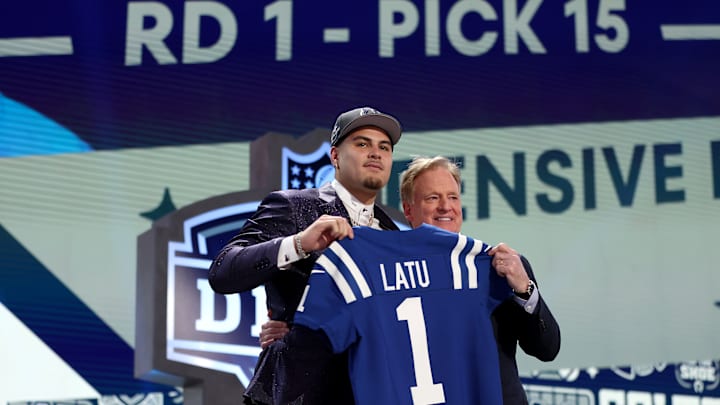Four years ago, the NCAA instituted policies allowing college athletes to capitalize on their name, image, and likeness rights. But getting paid to advertise for a third party is not the same as getting paid by the team for which you play. Until universities start paying athletes directly for their on-field contributions to the school, the NFL remains the primary place where one can get paid to play football.
This weekend, the National Football League invited 257 college football players to join one of its 32 franchises during the 2024 NFL Draft. Some of the young men selected in the opening round on Thursday evening already collected significant sums of money over the past few years playing for their universities, thanks to the NCAA's 2021 passage of a policy enshrining athletes' rights to profit from their name, image, and likeness. In some cases, athletes could make millions trading their NIL rights for cold, hard cash.
That isn't to say that NIL rights are in themselves a bad thing. But here's the thing about NIL rights—they are only tangentially tied to what an athlete does on the field.
Even something as seemingly simple as leveraging a prominent social media presence to market for a company requires labor that has nothing to do with playing football. If a college football player wishes to bring in hard-earned lucre for their efforts, they must expend additional effort away from the gridiron, away from the weight room, and away from the classroom. Instead of having two full-time jobs as athlete and student, they now have three.
Ultimately, a college football player is first and foremost performing a public relations role for a university. A university's football team, more often than not, is the first point of engagement for the general public. Even before we have completed the requisite education to attend a college ourselves, most college football fans have already built up a relationship with that institution through generations of fandom.
Despite their short time on campus, college football players remain indelibly linked with our impressions of a university—whether or not one might actually choose to matriculate on a campus. Long after their college eligibility is exhaisted, they remain forever connected to the places where their younger selves made magic on the turf. Universities benefit from that connection in real time, and they can continue drawing from the well of nostalgia decades down the road.
That public relations role, however, is one that goes unpaid and underappreciated. A scholarship is valuable only insomuch as it can be used without restriction, and for college athletes the demands on their time outside the classroom limit the possibilities available to them in terms of what course of study they pursue.
Far from an act of altruism, the college scholarship has always been a tool of persuasion (to get talent to play for a certain team) and a tool of coercion (long designed as one-year contracts to keep athletes in check). It is a requirement to ensure athletes remain eligible under NCAA rules, a simple accounting exercise where money shifts from one university account to another without ever actually reaching the athlete.
When you watch the NFL Draft, you are watching the first chance any of these players has ever had to make money from their physical talents. Everything these young athletes earned up to this point was the product of ancillary labor rather than a paycheck for their football skills.
